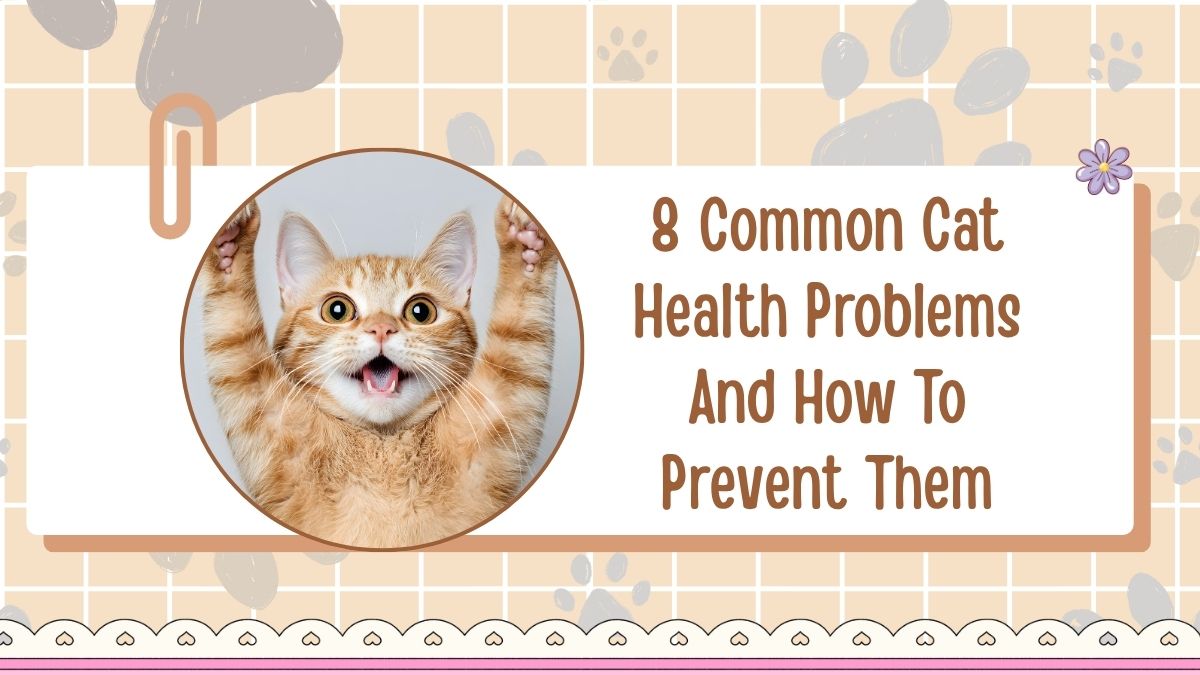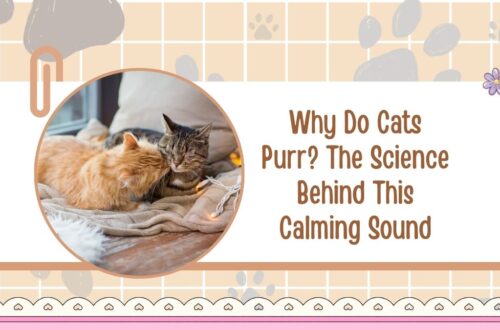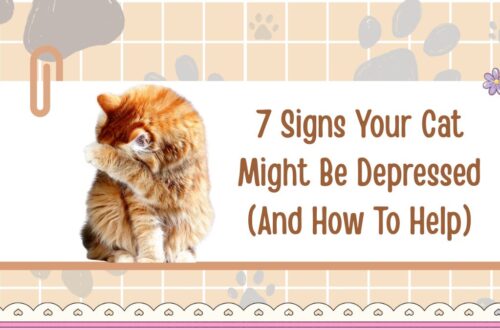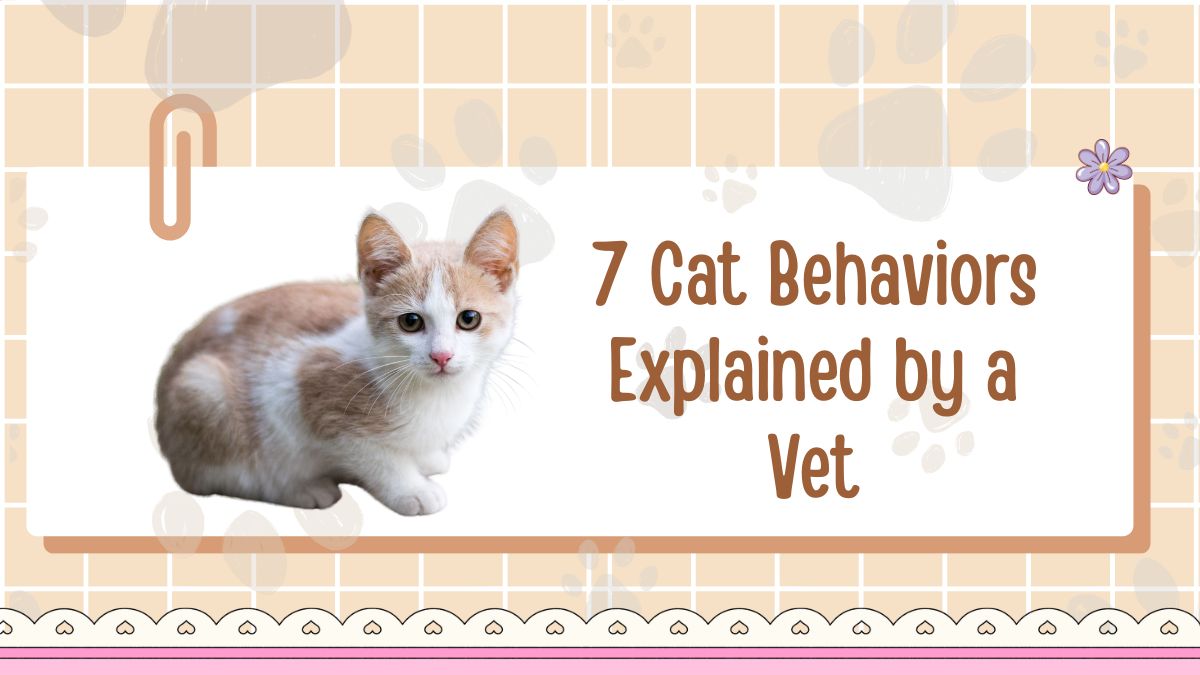As a loving cat parent, you want your feline friend to live a long, happy, and healthy life.
Be it a playful kitten or a dignified senior, cats can face a variety of health problems—some are preventable, some need early detection, and others require lifelong management.
In this comprehensive article, we’ll explore eight of the most common cat health problems, present key statistics, explain what to watch for, and provide practical prevention tips to help your cat thrive.
1. Dental Disease
What it is: One of the most frequently reported health issues in cats. In a large-scale study, dental disease was found in about 21.8% of cats examined.
Why it matters: Poor dental health can lead to pain, difficulty eating, and bacteria entering the bloodstream—affecting the heart, kidneys, and liver.
Prevention tips:
- Brush your cat’s teeth regularly or from a young age.
- Provide dental-friendly kibble and oral chews.
- Schedule veterinary dental check-ups every 1–2 years or per vet guidance.
2. Obesity
What it is: Excess body weight in cats is an increasing concern—one survey placed the prevalence at around 12% in some populations.
Why it matters: Being overweight increases the risk of diabetes, arthritis, heart disease, and reduces lifespan.
Prevention tips:
- Measure food portions and monitor treats.
- Provide interactive play and encourage movement daily.
- Use a feeding plan tailored by your vet, especially for older or indoor cats.
3. Parasites (Fleas, Ticks, Worms)
What it is: External parasites such as fleas, ticks and mites, plus internal parasites like worms, pose ongoing risks—even for indoor cats.
Why it matters: Parasites can transmit diseases, cause skin irritation, anaemia, digestive issues and even affect humans in some cases.
Prevention tips:
- Use vet-approved topical or oral parasite preventive products regularly.
- Keep the home environment clean, vacuum and wash bedding.
- Ask your vet for appropriate screening and prevention based on your region.
4. Feline Lower Urinary Tract Disease (FLUTD)
What it is: A collection of urinary system issues that affect cats, including bladder inflammation, stones, and urethral blockages. Some sources report FLUTD in up to 3% of cats seen by veterinarians.
Why it matters: Male cats are at risk of life-threatening urinary blockages, and chronic urinary conditions cause pain and frequent vet visits.
Prevention tips:
- Provide plenty of fresh water and wet food to increase urine volume.
- Offer multiple litter boxes in quiet locations.
- Maintain a low-stress environment with routines and interactive enrichments.
5. Kidney Disease
What it is: Chronic kidney disease (CKD) is common in older cats. While prevalence varies, many cats over age 10 develop some degree of kidney dysfunction.
Why it matters: CKD wastes the body’s ability to eliminate toxins and regulate fluid balance—leading to weight loss, increased thirst, vomiting, and shorter lifespan.
Prevention tips:
- Arrange regular veterinary screenings (blood work, urine) especially from age 8 onward.
- Manage blood pressure and tooth disease, since dental bacteria can impact kidneys.
- Feed renal-friendly diets if recommended by your vet.
6. Respiratory Infections / Upper Respiratory Disease
What it is: Viral or bacterial infections such as feline herpesvirus or calicivirus cause symptoms like sneezing, congestion and discharge.
Why it matters: Particularly common in multi-cat homes or shelters; can lead to chronic nasal disease or eye problems.
Prevention tips:
- Keep vaccinations current.
- Limit exposure to unknown cats or those with symptoms.
- Ensure a clean environment, good ventilation and minimize stress.
7. Feline Diabetes
What it is: An increasing problem in overweight or older cats; insulin-resistant diabetes mimics Type 2 in humans.
Why it matters: Without treatment, cats may develop complications like kidney disease, nerve damage and blindness.
Prevention tips:
- Control weight and exercise levels.
- Feed low-carbohydrate, high-protein diets if advised.
- Monitor for increased thirst or urination; early vet detection is key.
8. Cancer (e.g., Lymphoma)
What it is: Cancer is one of the top-reported serious illnesses in cats; lymphoma is a prevalent form. In some studies, the prevalence of certain cancers is linked to viruses like FeLV or FIV.
Why it matters: Early signs are subtle—weight loss, poor coat, lack of appetite—so vigilance matters.
Prevention tips:
- Keep indoor-outdoor exposure minimal; vaccinate against FeLV/FIV when appropriate.
- Schedule regular wellness exams and bloodwork.
- Adopt a healthy lifestyle for your cat: diet, exercise, low stress and parasite control.
Quick Reference – Common Cat Health Problems & Preventive Steps
| # | Health Problem | Key Facts & Figures | Preventive Measures |
|---|---|---|---|
| 1 | Dental Disease | ~21.8% prevalence in one study | Brush teeth, vet dental-checks, dental diet |
| 2 | Obesity | ~12% prevalence in cats in some surveys | Weight-watch, structured diet, play & exercise |
| 3 | Parasites | Fleas/ticks/worms common even indoor | Preventives, clean home, vet screening |
| 4 | FLUTD | ~3% of vet-seen cats | Hydration, wet food, stress-reduction, many litter boxes |
| 5 | Kidney Disease | Many cats >10 yrs develop some CKD | Regular check-ups, dental care, renal diet if needed |
| 6 | Respiratory Infections | Common in multi-cat/indoor-outdoor homes | Vaccinations, hygiene, limit exposure |
| 7 | Diabetes | Linked to obesity & older age | Maintain weight, appropriate diet, monitor symptoms |
| 8 | Cancer (Lymphoma etc) | Linked to viruses like FeLV/FIV in some cats | Vaccinate, health-screen, indoor lifestyle |
Why Prevention Matters: The Big Picture
- Early detection saves lives. Many health issues progress quietly—by catching weight gain, dental disease or subtle behavior changes early, you can intervene before severe damage occurs.
- Lifestyle is foundational. Diet, exercise, regular vet care and a low-stress environment make a major difference in long-term cat health.
- Some illnesses are preventable. Vaccination, parasite control, dental hygiene and good nutrition reduce the risk of serious diseases that were once considered inevitable.
- Quality of life improves. Every year you can add to your cat’s life is a win—not just in longevity, but in vitality, playfulness and companionship.
Caring for a cat means much more than feeding and cuddling—it involves vigilance, preventive action, and partnership with your veterinarian.
By focusing on the eight common health issues covered here—dental disease, obesity, parasites, urinary problems, kidney disease, respiratory infections, diabetes and cancer—you’ll be equipped to take proactive steps rather than reacting when something is wrong.
Regular wellness care, attention to diet and exercise, stress reduction and timely vet visits make all the difference. With these habits in place, your cat will have its best chance at a long, vibrant life as your faithful companion.
Caring for a cat means much more than feeding and cuddling—it involves vigilance, preventive action, and partnership with your veterinarian.
By focusing on the eight common health issues covered here—dental disease, obesity, parasites, urinary problems, kidney disease, respiratory infections, diabetes and cancer—you’ll be equipped to take proactive steps rather than reacting when something is wrong.
Regular wellness care, attention to diet and exercise, stress reduction and timely vet visits make all the difference. With these habits in place, your cat will have its best chance at a long, vibrant life as your faithful companion.
FAQs
For younger than 7 years and healthy, once a year is good. For senior cats (7+ years) or those with health issues, twice-yearly is often recommended. Your vet will advise based on your cat’s age, lifestyle and risk factors.
Yes. Indoor cats can still be exposed to fleas, ticks or worms via other pets, humans, or even wildlife. Year-round preventive treatment is generally advised by veterinarians.
Not entirely. Even good commercial diets vary in quality, and many cats become overweight or under-exercised. Monitor body condition (not just food amount), provide play, and discuss diet with your vet, especially in older age or if weight changes.




